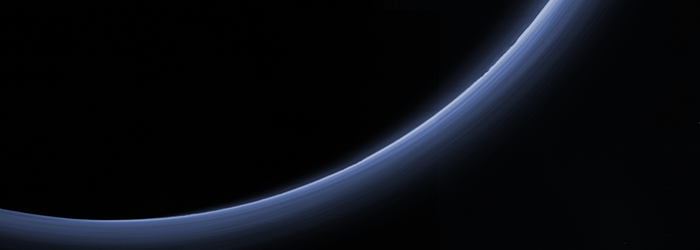With less than a fifth of the Moon's mass, Pluto manages, however, to have an atmosphere, albeit evanescent, a tenuous envelope of gas, produced by the periodic sublimation of the nitrogen ices.
A study that followed the evolution of Pluto's atmosphere for fourteen years highlights its seasonal nature and predicts that it will now begin to condense and disappear in the form of frost.
This study was published in the magazine Astronomy and Astrophysics and had the participation of Pedro Machado, from the Institute of Astrophysics and Space Sciences (IA) and the Faculty of Sciences of the University of Lisbon (FCUL).
The authors analyzed data from the atmosphere of this dwarf planet between 5 and 380 kilometers in altitude, obtained between 2002 and 2016. This period coincided with the summer in the northern hemisphere of Pluto3, where nitrogen ice reservoirs predominate, which sublimate through exposure and proximity to the Sun.
The data indicate that surface air pressure has increased by about two and a half times from 1988 to its maximum in 2015, yet XNUMX times fainter than the average sea-level air pressure on Earth.
“We are increasingly looking at Pluto's seasonal atmosphere as a comet activity,” says Pedro Machado. “Since it is a small-mass body, nitrogen molecules reach escape velocity very easily, and Pluto loses atmosphere, like comets. What will happen now is that temperatures are dropping and the nitrogen molecules start to form crystals near the surface again”, adds Machado, “in a process similar to the freezing of water here on Earth.”
The data come from observations of eleven times Pluto passed before stars in the sky. On these occasions, the star's light, although hidden from Earth by the solid body, is bent by the atmosphere towards us.
This technique, known as stellar concealment, makes it possible to use the light from the star, which has passed through the atmosphere, to infer its characteristics. For example, light is deflected to a greater or lesser degree according to its density at different altitudes, making it possible to determine the variation in atmospheric pressure and temperature as a function of distance from the ground.
Pedro Machado's team contributed with two observations made from the Observatory of the Centro Ciência Viva de Constância, and also with their experience in data processing and analysis. “Our stellar occult observation group has been around for nearly six years. We belong to an international network and we receive international alerts for visible concealments from Portugal”.
The second author of the article published today, Bruno Sicardy, is a PhD advisor at the Paris Observatory by Joana Oliveira, a member of the IA's Solar System study group.
Joana Oliveira is applying the stellar occult method to the study of Tritão, one of Neptune's moons. Another member of the group, João Ferreira, at the Nice Observatory and co-supervised by Pedro Machado, is using data on star positions published by ESA's Gaia mission to increase accuracy in predicting future stellar occultations.
Pedro Machado highlights the link between this area and the study of exoplanets. “We are learning in practice a technique similar to that used to detect and characterize the atmosphere of exoplanets. There is a direct synergy between the studies that we are doing in the Solar System and the studies that the IA is doing, or will do, for example, with ESA's future Ariel5 mission, a mission in which we lead one of the objectives, which is based precisely on this synergy”.
Author Institute of Astrophysics and Space Science
Science in the Regional Press – Ciência Viva



















Comments